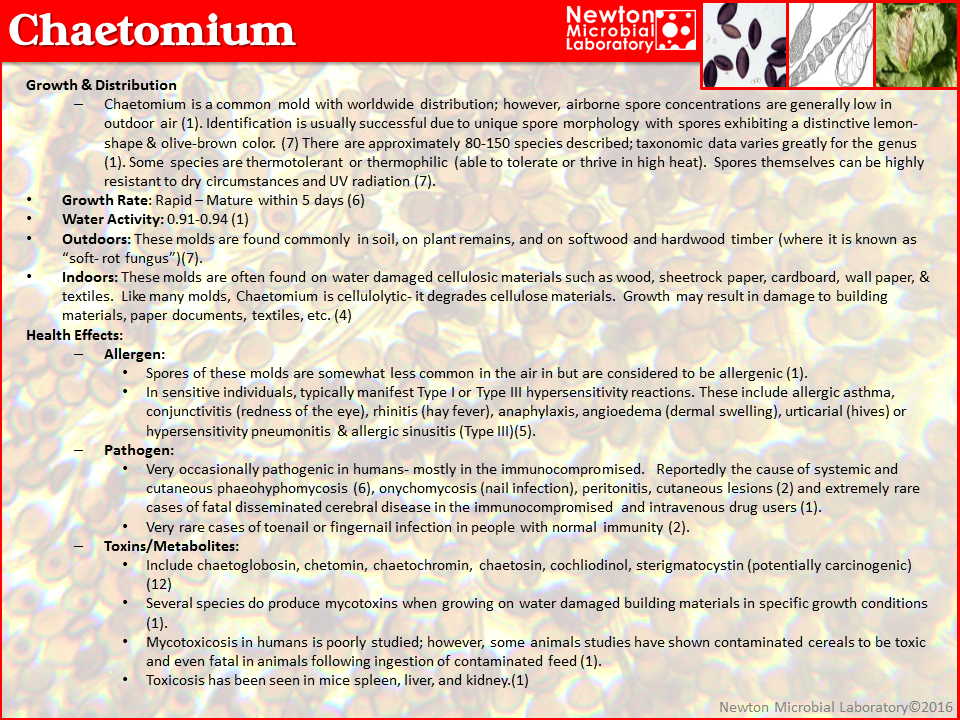Chaetomium
Growth & Distribution
Chaetomium is a common mold with worldwide distribution; however, airborne spore concentrations are generally low in outdoor air (1). Identification is usually successful due to unique spore morphology with spores exhibiting a distinctive lemon-shape & olive-brown color. (7) There are approximately 80-150 species described; taxonomic data varies greatly for the genus (1). Some species are thermotolerant or thermophilic (able to tolerate or thrive in high heat). Spores themselves can be highly resistant to dry circumstances and UV radiation (7).
Growth Rate: Rapid – Mature within 5 days (6)
Water Activity: 0.91-0.94 (1)
Outdoors: These molds are found commonly in soil, on plant remains, and on softwood and hardwood timber (where it is known as “soft- rot fungus”)(7).
Indoors: These molds are often found on water damaged cellulosic materials such as wood, sheetrock paper, cardboard, wall paper, & textiles. Like many molds, Chaetomium is cellulolytic- it degrades cellulose materials. Growth may result in damage to building materials, paper documents, textiles, etc. (4)
Health Effects
Allergen:
Spores of these molds are somewhat less common in the air in but are considered to be allergenic (1).
In sensitive individuals, typically manifest Type I or Type III hypersensitivity reactions. These include allergic asthma, conjunctivitis (redness of the eye), rhinitis (hay fever), anaphylaxis, angioedema (dermal swelling), urticarial (hives) or hypersensitivity pneumonitis & allergic sinusitis (Type III)(5).
Pathogen:
Very occasionally pathogenic in humans- mostly in the immunocompromised. Reportedly the cause of systemic and cutaneous phaeohyphomycosis (6), onychomycosis (nail infection), peritonitis, cutaneous lesions (2) and extremely rare cases of fatal disseminated cerebral disease in the immunocompromised and intravenous drug users (1).
Very rare cases of toenail or fingernail infection in people with normal immunity (2).
Toxins/Metabolites:
Include chaetoglobosin, chetomin, chaetochromin, chaetosin, cochliodinol, sterigmatocystin (potentially carcinogenic) (12)
Several species do produce mycotoxins when growing on water damaged building materials in specific growth conditions (1).
Mycotoxicosis in humans is poorly studied; however, some animals studies have shown contaminated cereals to be toxic and even fatal in animals following ingestion of contaminated feed (1).
Toxicosis has been seen in mice spleen, liver, and kidney.(1)

